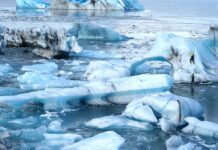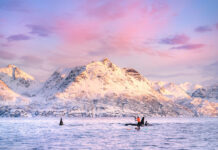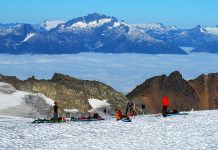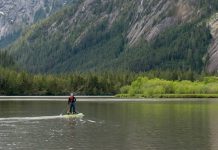Growing up in Canada, the cold is something you become very familiar with. You know about the different kinds of cold—like the kind of damp cold of a rainy November day that gets into your bones and the biting cold of a mid-January day that makes your nostrils stick together—and better yet you know how to dress appropriately for all of them.
Personally, I’m not sure I’ve ever gotten used to the cold, but I do know it makes you feel alive. The cold gives you a heightened awareness that awakens and electrifies the soul. Wind, rain, snow, ice, cold water, brrr… But cold places—if you can get to them, if you can endure them—are often the most wild and the most beautiful.
Finding the freezing point: Paddleboarding the cold coast of Iceland
In November 2021, work and passion brought me to Iceland as part of a four-man crew to capture a theme, Water In Its Many Forms, on film. The idea was to find somewhere we could ice climb, free dive, surf and paddleboard, with a goal of showcasing the many transformations of water and the human connection to it.
Iceland was the perfect canvas for our quest. Still, winter in Iceland can be humbling and sometimes hostile. We embraced the cold temperatures, big storms and strong winds that encased us in ice as part of the adventure. I relished my role as both athlete and photographer as we chased the fine line between solid and liquid water.
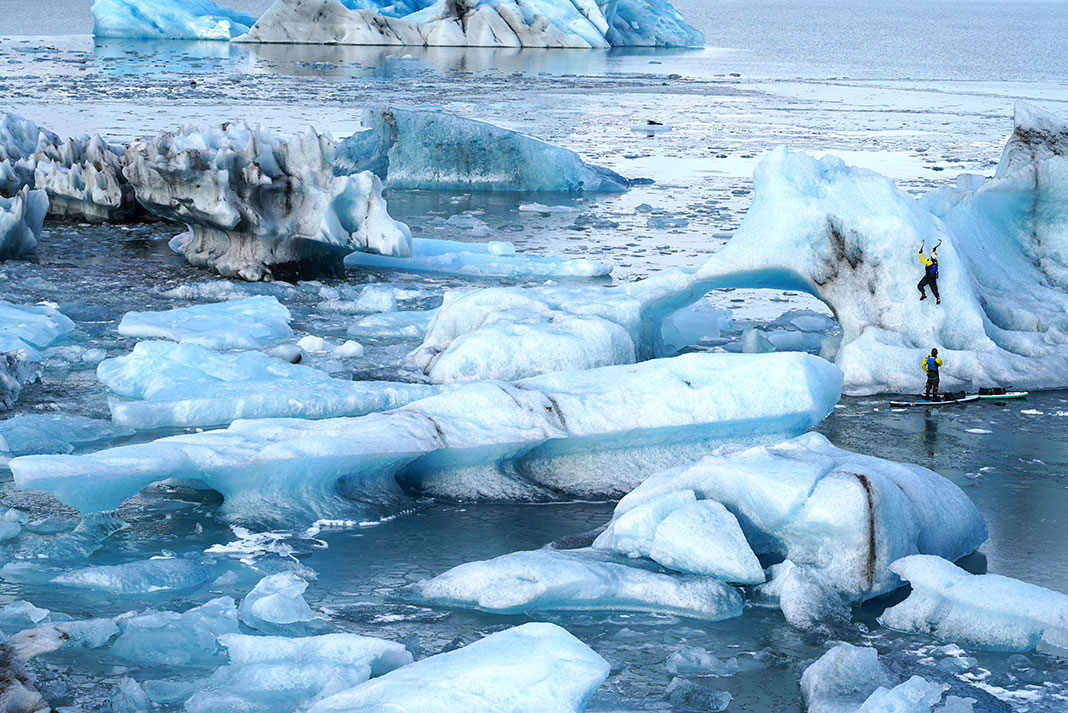
Adventures like this require an inspiring team. Tim Emmett is a longtime friend and adventure partner, as well as professional climber. Luca Malaguti is a free diver, fresh off breaking the Canadian national free diving record with a depth of 84 meters. Brian Hockenstein is a filmmaker who never shies from whatever the adventure requires to document the magic.
Captivated by the call of the cold
The days in Iceland flowed so naturally, blending together as we left one spectacular place for another. One moment I would be photographing Tim climbing out of a moulin, the next we would be surfing waves as a storm whipped up at sunset.
Exhausted at the end of each day, the four of us would squeeze into our rental SUV jam-packed with gear. Helmets, ice axes, boots, crampons, dive masks, flippers, wetsuits, drysuits, paddles—not to mention the multiple SUPs strapped to the roof. It was a lot, but we used it all almost every day. As has been common for me the past few years, inflatable SUPs were our main vessel of transport, breaking through ice, smashing through waves and cutting through wind as we navigated among icebergs.
Climbing onto these frozen blocks of ice was a terrifying endeavor. If these massive, unstable chunks were to break or roll over, our drysuits would help stave off the cold. But that would only matter if we weren’t bludgeoned or crushed in the process.
Wind was the biggest issue we had to navigate if we wanted to paddle or surf. Flexibility was crucial, the ability to go with the flow, not unlike the water we came to document. The locals said, if you want to know the weather, check the forecast every 15 minutes and be prepared for anything. We took their advice.
We let the weather dictate our days, using our gear and familiarity with the cold to decide which form of water to engage with. Some people find the cold numbing; I find it enlivening.
Tim Emmett leading and Luca Malaguti below. | Feature photo: Jimmy Martinello



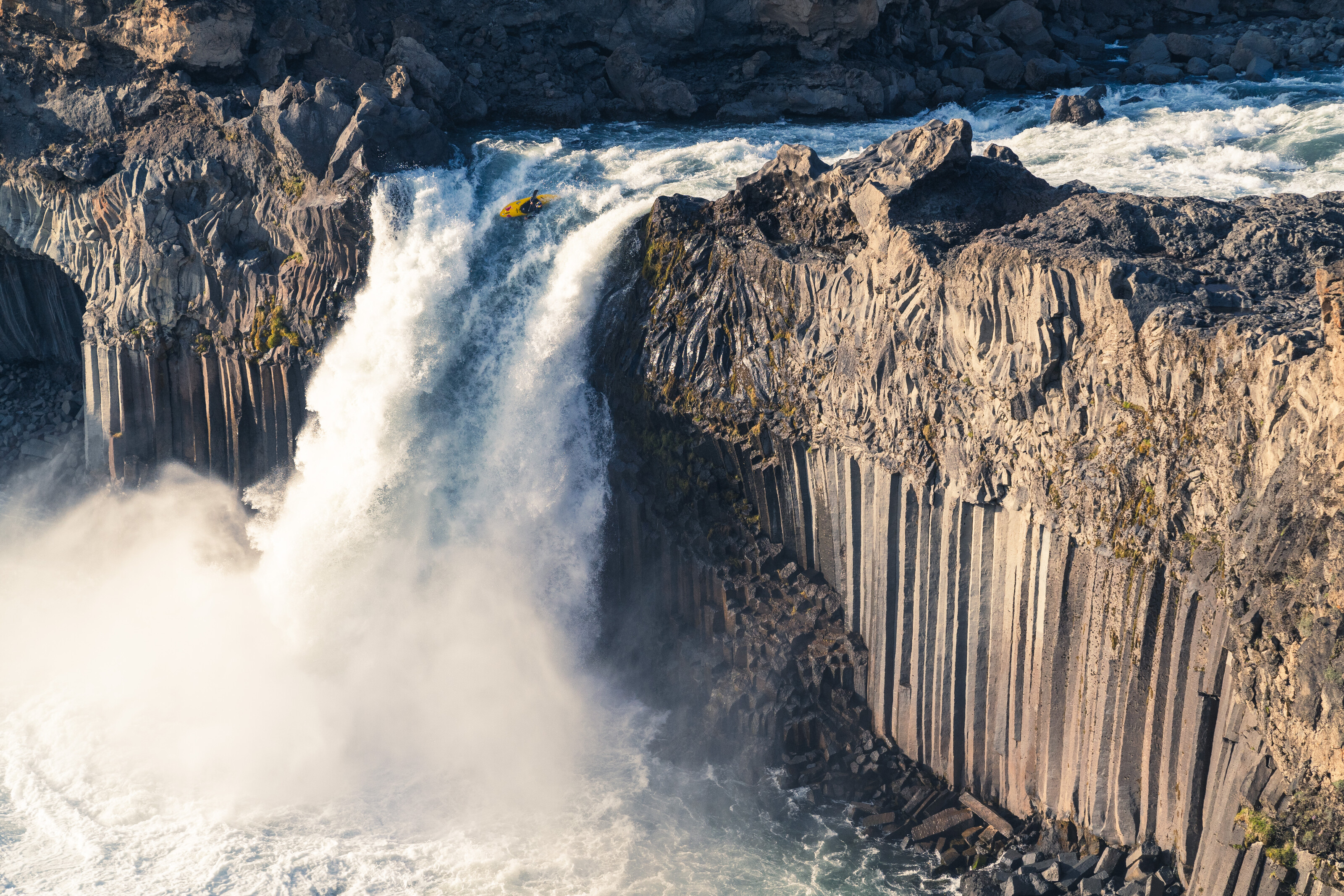
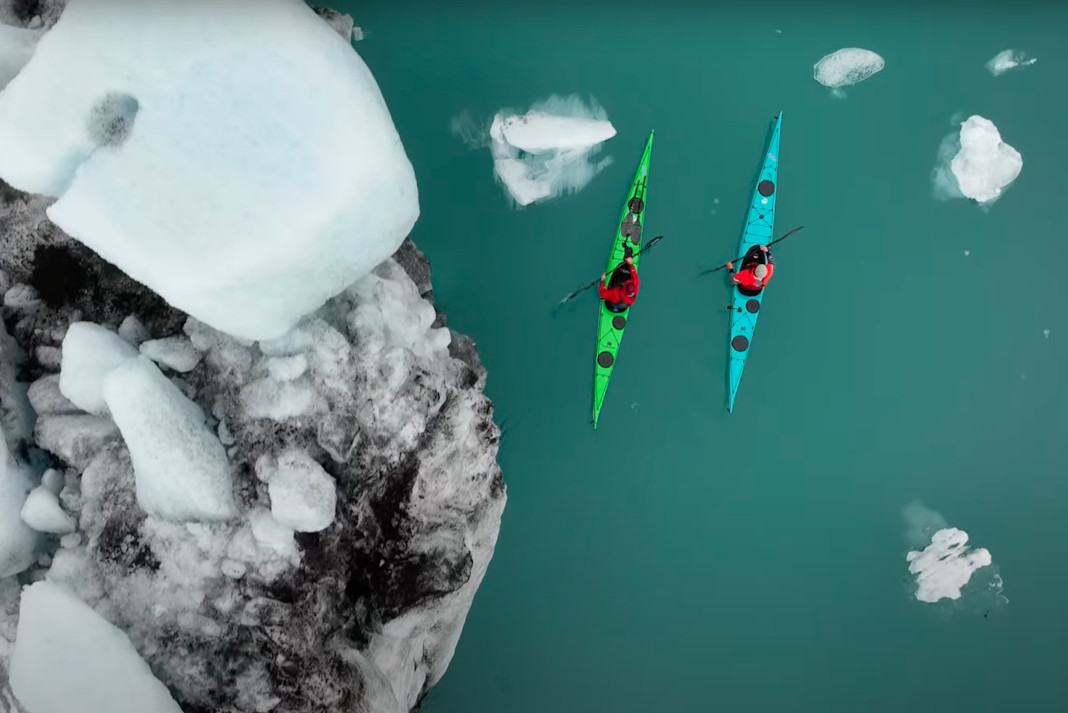
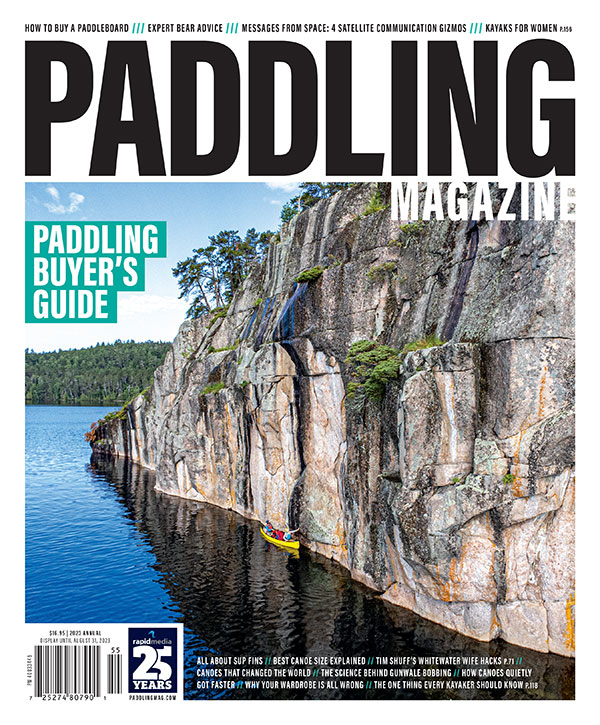 This article was first published in the 2023 Paddling Buyer’s Guide.
This article was first published in the 2023 Paddling Buyer’s Guide. 
